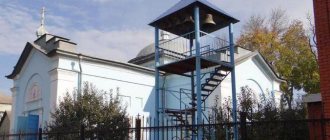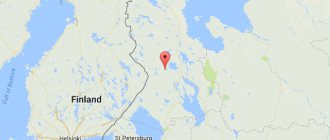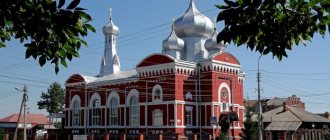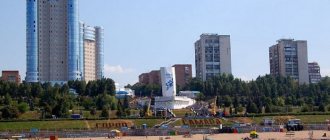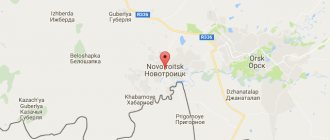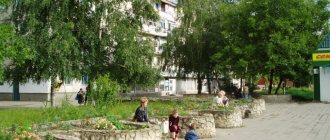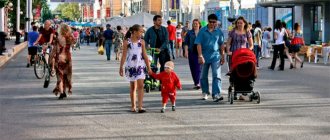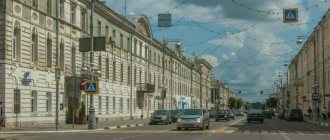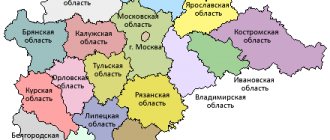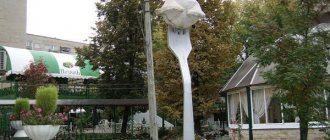Izhevsk is the recognized capital of Russian small arms. The city became famous thanks to the master inventor Mikhail Kalashnikov. The models of machines he created are considered the best in the world. Military equipment and weapons have become the hallmark of the city.
Izhevsk enterprises also produce high-quality steel, automobile and motorcycle equipment, radio components and communication systems. The city is one of the largest industrial centers in Russia. In addition, it serves as the capital of the Udmurt Republic.
City `s history
The earliest settlements on the site of modern Izhevsk arose in the 3-5 centuries AD. They were wooden buildings with log walls, ditches and ramparts, and nearby there were cliffs that served as a natural obstacle for enemies. Archaeologists also discovered the Izhevsk burial ground (now there is a Palace of Children's Creativity). The burials date back to the 4th-5th centuries.
For a long time, Izhevsk was under the control of the Tatars. In the early 1700s, large deposits of iron ore were discovered in the city area. As a result, many factories were built to process it. Later the city became famous for the production of iron weapons, both military and civilian.
Investments
Izhevsk is a steadily developing city, so a lot of investment projects are being implemented here in various fields of activity:
- residential construction (mainly multi-family housing);
- construction of a plant for the production of cable joints;
- reconstruction of sections of heating mains;
- reconstruction of overhead power lines;
- modernization of facilities to create production of the LADA2191 car;
- creation of production of springs with increased service life;
- expansion of steel radiator production;
- increasing the production of sporting and hunting weapons;
- creation of specialized production of gyroscopes;
- creation of lines for the production of insulating tapes and acrylic adhesive tapes;
- creation of production for anodizing aluminum profiles.
In addition, there are a number of projects that could be implemented if additional funding is found:
- expansion of paint and varnish production;
- creation of the Scientific and Production Center “Cryogenic Technologies”;
- low-rise microdistrict;
- creation of a biotesting and biomonitoring laboratory;
- remediation of solid waste landfill;
- creation of production of light-emitting diodes;
- technical re-equipment of the boiler room.
Population of Izhevsk
Izhevsk is not a million-plus city. However, the population of Izhevsk increased rapidly, starting in 1923 and ending in the early 90s. During this time, the number of residents increased from 51 thousand to 647 thousand people. Further, until 2000, a weak growth trend prevailed, and then the population decreased slightly. After 2011, there was a renewed trend towards an increase in the number of urban residents. However, this growth may be misleading and is likely due to an increase in the flow of migrants rather than an improvement in the demographic situation.
In 2022, the population of the city of Izhevsk was 647,277 people. This corresponds to 42.71% of the total number of residents of Udmurtia. The population density of the city is 2016.8 people/km2.
Events
The central square of Izhevsk is a favorite place for walks and recreation for citizens. All major festive and special events, fairs, concerts, exhibitions, and folk festivals are organized and held here. For example, on the day of the city of Izhevsk, the following performers gave concerts on the Central Square: Alexander Buinov, Sergey Lazarev, Ivanushki International, Larisa Dolina, Kristina Orbakaite, Igor Nikolaev, Valery Syutkin, the Na-Na group, Oleg Gazmanov, Dima Bilan , Nikolai Baskov, “Bricks”, “Kalinov Bridge” and others.
Various political events, such as demonstrations, rallies, and pickets, are organized and held on the square. Various festivals take place here. For example, the blacksmith art festival gave the city many sculptures that today decorate the square and streets of the city. The sculpture from this festival “Scientist Cat” decorated the square on Pushkinskaya Street and became a favorite object of citizens and guests of the city.
In summer, there are children's attractions on the square for children, you can ride on cars and slides. In winter, a central Christmas tree is installed here and an ice town is built.
Age composition of the population
The population of Izhevsk is on average younger than the country as a whole. Younger age groups account for 15.8% of the total number of residents, and older people account for 20%. There are 64.2% people of working age in the city. This may be due to low life expectancy - on average it is 64.2 years. According to this indicator, Izhevsk is in 43rd place among the regions of the Russian Federation.
Men live especially short lives - on average only 57 years. The life expectancy of women is significantly longer - up to 71 years. This means that the majority of men in Izhevsk do not live to see retirement at all. On average, per 1 thousand inhabitants, 9.3 people are born and 12.1 people die.
Famous people
The lives of many famous people are connected with Izhevsk, but, of course, the most famous of them is Mikhail Kalashnikov. His brainchild, the machine gun of the same name, can even be seen on the flags of a number of countries. Among other celebrities of the city and the republic, the following personalities can be noted:
- Pyotr Shuvalov, count, founder of the city, famous statesman of the country;
- Grigory Vereshchagin, ethnographer;
- Vladimir Korolenko, famous human rights activist;
- Dmitry Zelenin, ethnographer;
- Hermann Weber, motorcycle designer;
- Alexander Belyanin, full Knight of St. George;
- Hugo Schmeisser, small arms designer;
- Ivan Bodalev, merchant, builder and philanthropist;
- Gennady Nikonov, weapons designer;
- Lyudmila Glazova, actress;
- Valery Medvedtsev, biathlete, Olympic champion;
- Anton Sychev, swimmer;
- Ivan Tcherezov, biathlete;
- Maria Gorban, actress.
Quality of life of the population
Izhevsk is far from the most prosperous city in the Russian Federation. Despite the large number of educational centers (4 higher educational institutions, 100 schools, many technical schools, colleges, vocational schools, a large number of private institutions), the city has an unfavorable social situation.
The collapse of the USSR, during which the quality of life was also very low, hit the city residents hard. Most of the enterprises were bankrupt and looted, despite the fact that this was the only place of income for the residents of Izhevsk. Employment fell sharply.
At the same time, the alcohol industry developed, causing drunkenness to spread rapidly. Now this is a big problem for the city. Local authorities are trying to somehow improve the situation by organizing various entertainment events. Unfavorable living conditions and high levels of alcoholism affect the residents of Izhevsk, making many people embittered and gloomy.
general information
Main indicators of socio-economic development of the Udmurt Republic Photos
- New
- Viewed
- Iconic objects 07/21/2010 (35 photos)
Modern Udmurtia is a developed industrial and agricultural region of the Volga Federal District.
Geographical characteristics.
Udmurtia is located in the east of the Russian Plain, in the European Urals, in the interfluve of the Kama and its right tributary, the Vyatka. In the west and north, the Udmurt Republic borders on the Kirov region, in the east - on the Perm Territory, in the southeast - on the Republic of Bashkortostan, in the south and southwest - on the Republic of Tatarstan.
The length of the territory from north to south is 297.5 km, from west to east – 200 km. The total length of the borders is 1800 km. The area of the republic is 42.1 thousand square kilometers (0.25% of the territory of the Russian Federation). The territory of Udmurtia is larger than Western European countries such as Belgium and Switzerland, and is approximately equal to the area of Denmark.
The republic's position in the mid-northern latitudes and the absence of nearby seas and oceans determine a temperate continental climate with cold, snowy winters and warm summers.
Population
of the Udmurt Republic as of 01/01/2016 is 1,517,164 people. About 70% of the republic's residents live in cities.
The Udmurt Republic includes 5 cities, 25 rural districts, 302 rural settlements, 1 urban settlement, 1964 rural settlements.
The capital of the Udmurt Republic is the city of Izhevsk
, which is home to 643.5 thousand people.
Small towns
: Votkinsk - 98.1 thousand people, Glazov - 94 thousand people, Mozhga - 50 thousand people, Sarapul - 98.6 thousand people, Kambarka - 11 thousand people.
National composition.
People of more than 100 nationalities live in peace and harmony on Udmurt soil.
According to the All-Russian Population Census of 2002: Russians - 60.1%, Udmurts - 29.3%, Tatars - 7.0%.
The indigenous population is the Udmurts. This is one of the ancient Eastern Finnish peoples of the northwestern forest region of the Urals. By language, the Udmurts belong to the Finno-Ugric family of peoples, which also includes the Komi, Mari, Mordovians, Estonians, Finns, Karelians, Sami, Hungarians, Khanty and Mansi. The total number of Udmurts in the world is about 750 thousand people. 67% percent of them live in the Udmurt Republic.
The official languages of the Udmurt Republic are Russian and Udmurt.
Economy.
The leading sector of the republic's economy is industry; it accounts for more than 45 percent in the structure of the gross regional product. A key role in it is played by large enterprises of the military-industrial complex, which produce high-tech products that are competitive in the world.
The republic's enterprises produce equipment for nuclear power plants, telecommunication systems for space, various types of weapons and weapons, communications equipment, radio electronics, medical equipment, oil and gas equipment, metal and plastic products. The woodworking industry occupies a significant place.
Currently, the most important direction in the development of industry in the region is the formation of the “Udmurt machine-building cluster”. It is based on leading defense enterprises operating in the region and universities of the republic.
An important priority in the development of Udmurtia belongs to agriculture. Today the population of the republic is fully provided with basic products. In addition, food products from Udmurtia are exported to 63 Russian regions and a number of foreign countries.
Natural resources.
The most important are oil, coal, peat and non-metallic building materials. Deposits of hard and brown coal have been discovered. The republic is rich in peat. The largest peat deposits are located in the basins of the Kilmez and Cheptsa rivers. Limestones, clays, sands, and gravels are common.
Over 10 million tons of oil are produced annually in the republic. Total proven oil reserves are approximately 300 million tons.
46% of the territory of Udmurtia is covered with forests, half of which are coniferous.
Communications.
The distance between the capital of the Udmurt Republic, Izhevsk, and the capital of the Russian Federation, Moscow, is 1129 km, the cities: St. Petersburg – 1904 km, Yekaterinburg – 800 km, Perm – 320 km, Kazan – 395 km.
The Udmurt Republic has all types of transport links with other regions of Russia. The transport network includes a network of railways, public roads, navigable river routes with access to the Caspian, Black and Baltic seas. The most important river ports are Kambarka and Sarapul. Navigation on the Kama River within the republic. Duration of navigation – 6.5 months.
Construction of bridge crossings across the Kama and Bui rivers near the city of Kambarka is underway, which will increase the transit potential of the region and give a significant impetus to the development of transport and economic relations in the Central, Volga and Ural Federal Districts.
Air transportation is carried out by state aviation, which is constantly expanding its flight geography.
Tourist complex
Udmurtia includes almost 2.5 thousand objects. Many of them are connected with the life and work of such world-famous people as Pyotr Ilyich Tchaikovsky, Mikhail Timofeevich Kalashnikov, Galina Alekseevna Kulakova, Nadezhda Andreevna Durova.
More than 150 places to accommodate tourists, 32 museums, over 2 thousand historical and cultural monuments, a national park, natural parks and reserves, natural monuments, sports complexes, 2 of which are ski resorts. Rural tourism is also developing. About 150 private farms receive tourists in rural areas.
Attractions
For those who are still thinking of spending a holiday in this city, there is not much to see. Izhevsk is a city of industrialists, and they mainly produced weapons here. Therefore, the sights are dedicated specifically to this craft. The city has 2 weapons museums, one of which is dedicated to Kalashnikov weapons. There is also a fine arts museum. In addition, there are 4 archaeological sites and 166 architectural objects. In general, this city is not very attractive for recreation and tourism.
Thus, despite the generally positive population dynamics, the demographic situation and quality of life of the population cannot be considered satisfactory.
Negative trends
Despite the generally positive dynamics of recent years, a number of points regarding changes in the population in the capital of Udmurtia look very alarming. This primarily concerns the slowdown in growth rates over the past two years. The main reason for this seems to be a gradual decrease in the number of women of fertile age. Subsequently, it seems very likely that the mortality rate will again exceed the birth rate, since the generation of the 1990s is very much inferior in quantitative terms to the generation of the 80s.
Secondly, Izhevsk, whose population remains extremely unstable, continues to be a city with an extremely high mortality rate. Particularly alarming is the fact that predominantly people of working age die. This negatively affects both the city’s human resources potential and its demographic prospects.
Finally, thirdly, the population of Izhevsk, like any city in Russia, is directly dependent on the economic state of the region and Russia as a whole. The crisis phenomena that have emerged in recent years clearly do not encourage young families to strive to have a second and subsequent children.
Coat of arms
The coat of arms of Izhevsk is presented in the form of a French shield. It is divided into two equal parts vertically. In a dissected silver and blue field, mites of variable colors are depicted. There is an arrow on top of them. Behind the ticks are two green rowan branches crossed. At the base there are scarlet clusters. The coat of arms reflects the past of the locality, its economy, represented by mechanical engineering and the defense sector.
Approved by decision of the City Duma No. 262 of May 27, 1997. The authors of the artistic composition are S. Bekhterev and N. Bykov. It is included in the State Heraldic Register of the Russian Federation under No. 186.
